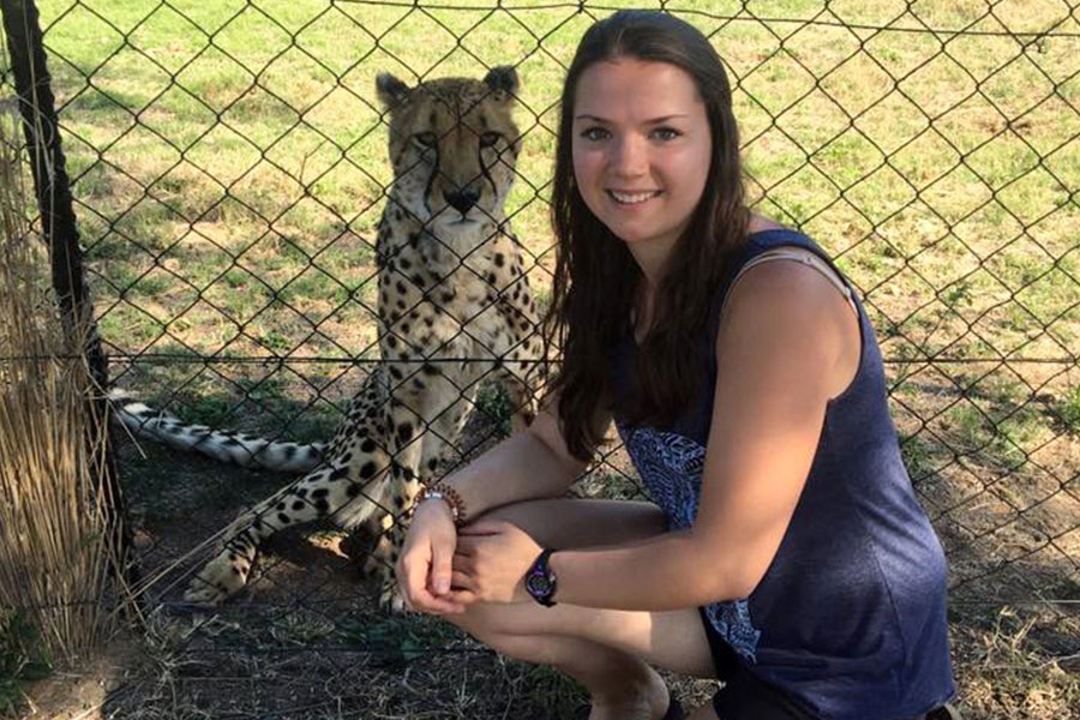
Student savours summer with cheetahs
There are few things more mesmerizing in life than to see a cheetah take off at a dash, the drops of black dotting its golden fur blurring together as it races before your eyes.
By HenryTye GlazebrookOr at least that’s what Raelyn Serhan remembers most about her time with the animals, which she spent two weeks helping to care for in South Africa as part of an educational volunteer program called Loop Abroad.
“They have what they call the FeraCare Raceway, and it’s a fenced-in track with a lure that the animals chase,” she said, noting that the creatures can reach nearly 100 km/h in under three seconds. “It doesn’t quite go up to the cheetah’s full speed, but you get to see them sprint around. It was really cool. It was a couple seconds and they were already around this big track and back again.”
Serhan is a second-year animal biosciences student in the University of Saskatchewan’s College of Agriculture and Bioresources. Despite the Loop program dovetailing nicely with her degree, she said she was initially drawn to it not because of academia but simply on account of her innate love of animals.
She wasn’t even studying animal biosciences when she first heard of Loop, in fact, but was instead taking commerce courses at the Edwards School of Business.
“I grew up on a farm, and animals have always been a key part of my life,” she said. “I have always considered vet med as a potential career path. After my first term at the U of S in 2015, I decided to follow my heart and changed my educational journey for the following school year.”
Though her time in South Africa was not officially related to academia, Serhan said the program was modelled so as to provide instructional opportunities—including daily time in classrooms—as often as possible.
“The program I went with is a college veterinary program out of the United States,” Serhan said. “It makes it so much more interesting, because you learn about cheetahs’ anatomy and everything associated with their conservation and health in South Africa. It’s not just going there and volunteering; you’re also learning about the animals, too.”
The result, she said, was a clearer understanding of large cats she would otherwise have no hands-on training with, as well as a better appreciation for the technological and educational opportunities available at Canadian institutions like the U of S.
“It gives you a better understanding of how things work across the world, and how lucky we are and how advanced medical technology is here,” she said. “There you’re just working with the basics, whatever you have on-hand, if there is an emergency. Here there’s so much more. It’s a totally different game.”
Her time half a world away is one that Serhan will never forget, and one that she heartily recommends to anyone else considering new paths in their educational experience.
“Just do it,” she said. “You think it’s going to be the trip of a lifetime when you go, but it’s exceeded all expectation. This experience is one that I wouldn’t trade for anything.
“Being able to travel across the world and work with such majestic animals, and witness the care and effort that the staff puts into the wellbeing of each and every cheetah, is unexplainable. They take great pride and care in their work and are striving to save the cheetah species and genetics.”

